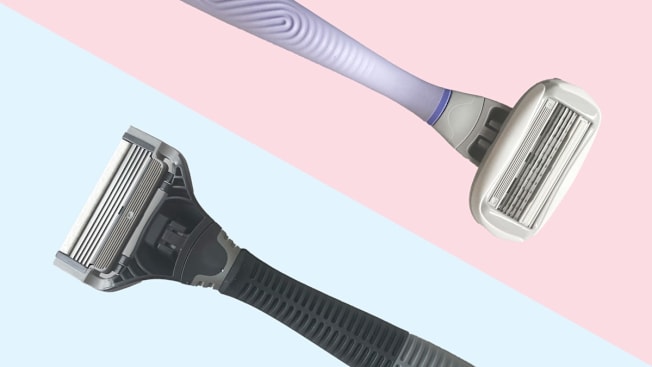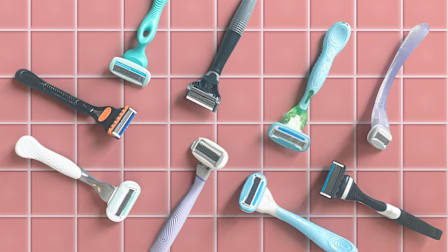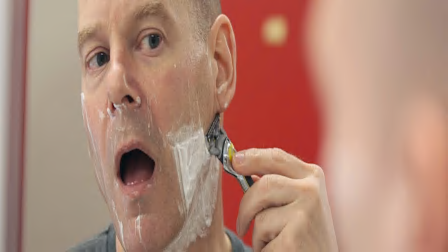3 Differences Between Men’s and Women’s Razors
We talked with experts from Bic and Gillette
When you shop through retailer links on our site, we may earn affiliate commissions. 100% of the fees we collect are used to support our nonprofit mission. Learn more.

Years ago I was walking through Central Park in New York City when a person working for Schick asked if I wanted to try a new razor. If you’ve ever lived in the Big Apple, then you know that freebies often randomly find their way into your hands.
- The Differences: Do Women Pay More? The Handle The Razor Head The Blade Positioning
Higher Prices for Women's Products
Some differences are immediately clear: Razors marketed to women often come in an array of pastel colors and are sometimes packed with sweet scents meant to appeal to them. You may have also noticed that the prices reflect what’s known as the pink tax. It isn’t an actual tax; it’s that products like razors for women are frequently priced higher than those for men.
Consumer Reports asked a representative from Gillette, which makes various razors, about the price differential. The company said that its wide selection of grooming products was meant to fulfill different wants and needs, which could translate to higher prices.
“Our goal is to ensure that any pricing differences are driven by non-gender-based factors, such as product features and benefits, materials costs, manufacturing variances, and more,” Gillette said in a statement. “Additionally, it’s important to remember that in-market pricing is at the sole discretion of the retailers who sell Gillette products directly to consumers.”
Karen Schwartz, senior global vice president of the blade excellence category at Bic, told Consumer Reports something similar. While the company suggests a retail price for its products based on production volume, packaging, package size, product features, color variety, and marketing investment, retailers are ultimately the ones that set the price you see at the store.
“The cost of producing seemingly similar items can vary significantly,” she said. With razors, factors include the handle shape, blade configuration, lubrication strips, and color. The price set by retailers, Schwartz added, can also be influenced by order volume or promotional activity. “That said, our recommendation to retailers is to price our razors consistently across comparable products, such as by blade count and pack size, regardless of whether they are designed for men or women.”
CR asked the companies to break down the key differences in razors made for men and women.
Difference No. 1: The Handle
Schwartz said the handles of men’s and women’s razors are designed specifically for the anatomy of the areas that they shave. This has an impact on the shape, weight, and materials used.
Frauke Neuser, PhD, senior director of scientific communications for P&G Beauty & Grooming, said men’s and women’s shaving tasks are very different. Men typically shave their faces, while women most often shave their bodies. Razors for each, she said, are uniquely designed to tackle these surfaces.
“The number of hairs in men’s beards ranges from 6,000 to 25,000,” she said, adding that the hair is thick and tough. “They need a very particular tool to deal with that.”
In the Market for a New Razor?
Check out the top performers from our tests.
Women often target a bigger surface area with their razor, like their legs, so it must travel a longer distance and be held upside down. “The hair density is lower, and the thickness, the toughness of [a woman’s body] hair is less,” Neuser said, adding that knees are bony and legs have convex curves, while underarms are concave.
Because of the way a man holds a razor with his hand close to his face, the handle is built straighter, and “the center of gravity is in a very particular place,” Neuser said.
The handle for a woman’s razor is significantly more curved. “It has what we call the mermaid’s tail, because I’m going to hold it differently,” she said, noting a peak in the curve as a spot for an index finger to be placed. “I need this here for my finger to hold on to.”
Where you’re shaving—whether that’s at a sink or in the shower—factors into certain design details, like a razor base that can be placed by a sink, a shower holder that sticks to the wall, or a grooved grip on the handle that prevents slipping. “I’m going to say 90 percent of the cases, he’s going to be in front of a mirror over the sink, while he’s holding the razor upright,” Neuser said. “When I do my legs, I’m in the shower. It’s slippery. It’s wet. I’m going to hold my razor upside down.”
Difference No. 2: The Razor Head
Neuser said the razor head, also known as the cartridge, on the Gillette product is uniquely designed for men’s and women’s features. If you look at a man’s razor head from the side, she said, it’s flatter. A woman’s razor head tends to be larger and more curved around the edges to more comfortably reach areas like the underarm or bikini area.
The lubrication area tends to be much bigger on a woman’s razor. Some razor heads have more blades than others, ranging from two to five. Where there are fewer blades on a woman’s razor, you might find more moisture bars.
Blades are added to improve the closeness of the shave, Schwartz said, as well as reduce irritation on the skin. When a three-blade razor comes in contact with skin, the first blade lifts the hair, the second blade cuts, and the third cuts even closer. “For higher blade counts, this process continues with the fourth and fifth blades,” Schwartz said. “The higher the blade count, the closer the blades, which means there is less ‘skin bulge’ between the blades and more points of skin contact, resulting in less irritation on the skin and a closer shave as the consumer uses the razor.”
Women’s razors are generally better suited for the bikini area. Schwartz said they often have softer, rounded heads, which are better for navigating curves. The blades are designed to handle coarser hair on the body, like pubic hair, while minimizing irritation, although she said Bic uses the same high-quality blades in all of the razors it manufactures.
The Venus line by Gillette has a two-blade women’s razor specifically for the delicate bikini zone. “Pubic hair tends to be very curly, and if you use a five-blade razor, which literally cuts the hair up to five times, we’re getting such great closeness that the hair slightly retracts back into the skin,” Neuser said, adding that this can lead to ingrown hairs. “The chances of that hair growing in as it regrows are much increased, and that’s one of the biggest concerns and complaints from women.”
There’s also what’s called a precision trimming blade, a single blade on the top back side of men’s razors by Gillette and available only on the women’s intimate area razor. While men often need precise trimming around sideburns or under the nose, women often want this for straight lines at their bikini line.
Difference No. 3: Blade Positioning
How individual blades are positioned and how they move differ between men’s and women’s razors, according to the companies we consulted. A man’s razor blade is positioned to cut through hair that’s like copper wire, while a woman’s will target finer hair. “The geometry of the blades is slightly different to make sure the experience and the comfort are really sort of fine-tuned for that,” Neuser said.
Because a man will apply more pressure to the razor when he’s using it on his face, she said, there are blade stabilizers at the back of the head to keep each blade parallel with one another. “Blade stabilizers keep the spacing and the parallel arrangement between the three or five blades constant and stable,” Neuser said. “Women do not apply as much pressure when shaving, and the hair is not as tough to cut, so the blades in women’s razors do not need the same stabilization.”
The blades in Gillette’s men’s and women’s razors can move up and down individually because they’re mounted on springs, like a car’s shock absorber, Neuser said, which is important for following smaller contours across the topography of the skin, including small bumps, moles, and unevenness.
The front pivot of women’s razors, the movement controlled by the connection between the razor head and handle, is designed for curves, while the “torque of pivot,” as she calls it, of a man’s razor is designed for the face. Can a woman use a man’s razor on her legs? Yes. Can a man use a woman’s razor on his face? Yes. “But would the experience and the result be great? No,” Neuser said. “And that’s what it’s all about, right? Sort of designing the tool to give the best results and the best experience.”
Both Gillette and Bic say their women’s razors are better for the body. Neuser said there are razors that target men’s body hair, but “the whole arrangement of the blades probably needs to be a bit different when he shaves his body so that the long hair doesn’t start clogging the blades. So again, it seems such a simple tool, but there is so much, so much detail that goes into it.”
Schwartz said women’s razors made by Bic offer more skin cushioning, flexible heads, and moisturizing features to help glide smoothly across larger or curved areas of the body. “They also accommodate longer strokes, which are more typical when shaving legs and arms,” she said. “However, some people find that men’s razors work better for specific tasks, like getting a closer shave in small or sensitive areas. It’s really about what works best for your skin and shaving routine.”


















